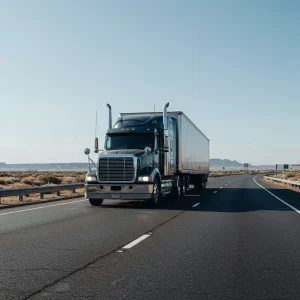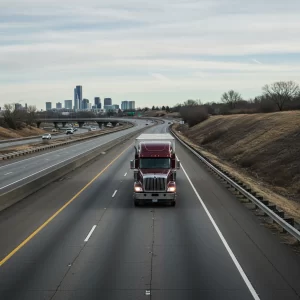
Can my truck be impounded for Clean Truck Check violations?
What Triggers an Impoundment for Clean Truck Violations?
In California, trucks are called “pre-emission” if they were made before the state added strict rules for heavy-duty trucks. Usually, this means trucks built before 2004. These trucks do not meet rules in Title 13, Section 1956.8, or the Heavy-Duty Engine and Vehicle Omnibus Regulation. Pre-emission trucks include medium and heavy heavy-duty diesel engines (MHDDE and HHDDE) that weigh more than 10,000 pounds. These trucks do not have modern devices like Diesel Particulate Filters (DPF), Diesel Oxidation Catalysts (DOC), Selective Catalytic Reduction (SCR), or Low-NOx engines. Because of this, they release more nitrogen oxides (NOx), particulate matter (PM), and non-methane hydrocarbons (NMHC). California’s rules, managed by the California Environmental Protection Agency (Cal/EPA) and CARB, give programs like the Carl Moyer Program and Clean Fuel Fleet (CFF) program. These programs help truck owners replace or upgrade old trucks to lower pollution and meet emission goals.

California Pre-emission trucks make a lot of pollution, so CARB and Cal/EPA focus on them. They release high levels of NOx, PM, and carbon monoxide (CO). California has stricter rules than the U.S. Environmental Protection Agency (EPA). Programs like the Clean Fuel Fleet (CFF) and Carl Moyer Program give money to replace old trucks with Low-NOx engines, Diesel Particulate Filters (DPF), or Selective Catalytic Reduction (SCR). Pre-emission trucks include urban buses, Class 8 trucks, vocational trucks, and heavy-haul trucks. Many trucks are still used because they are reliable and have resale value. Fleets can use voluntary clean fuel fleet programs or earn emission credits through Averaging, Banking, and Trading (ABT) programs. This helps them reduce overall pollution while keeping trucks running efficiently. Learn more about Clean Truck Check In Los Angeles, CA.
California has led the country in making rules for heavy-duty trucks. It often made stricter rules than the U.S. Environmental Protection Agency (EPA). In the late 1980s, pre-emission trucks had to follow basic pollution limits but did not have Diesel Particulate Filters (DPF) or Selective Catalytic Reduction (SCR). The Heavy-Duty Engine and Vehicle Omnibus Regulation introduced tests like the Federal Test Procedure (FTP), Ramped Modal Cycle (RMC), and Not-to-Exceed (NTE) limits. These tests made sure trucks followed rules in real-world conditions. CARB also created Low-Emission Vehicle (LEV), Inherently Low-Emission Vehicle (ILEV), and Ultra-Low-Emission Vehicle (ULEV) programs. These programs helped trucks become cleaner over time. They also prepared fleets and manufacturers for post-emission trucks, the Advanced Clean Trucks (ACT) rule, and Omnibus Low-NOx rules. Learn more about Clean Truck Check In Compton, CA.
California’s rules for heavy-duty trucks are in Title 13, Section 1956.8. CARB enforces these rules to limit NOx, non-methane hydrocarbons (NMHC), carbon monoxide (CO), particulate matter (PM), and formaldehyde (HCHO). The rules cover light, medium, and heavy diesel engines (LHDDE, MHDDE, and HHDDE). Trucks are tested with the Federal Test Procedure (FTP), Ramped Modal Cycle (RMC), Supplemental Emission Test (SET), and low-load cycle tests. These tests make sure trucks stay under limits for their entire useful life. Engine family certification levels (FCL) and warranty periods also help ensure compliance. Fleet operators can use Averaging, Banking, and Trading (ABT) credits to reduce costs while keeping operations smooth. Technologies like Diesel Particulate Filters (DPF), Diesel Oxidation Catalysts (DOC), Selective Catalytic Reduction (SCR), and Low-NOx engines help meet these rules in buses, vocational trucks, and Class 8 trucks. Learn more about Clean Truck Check In Cudahy, CA.
Trucks built from 1987 to 2003 are usually pre-emission trucks. These trucks came before Diesel Particulate Filters (DPF), Diesel Oxidation Catalysts (DOC), Selective Catalytic Reduction (SCR), and Low-NOx engines were common. Examples include Class 8 trucks, vocational trucks, and heavy-haul trucks. Many are still used because they are reliable and have high resale value. California has phased rules for these trucks, like denying DMV registration, offering low-mileage exemptions, and requiring fleet-wide NOx reductions. Fleets can also use the Carl Moyer Program or voluntary clean fuel fleet programs to replace old engines and meet air quality goals. Learn more about Clean Truck Check In Duarte, CA.
Optional Low-NOx engines let manufacturers make engines cleaner than normal until model year 2023. Fleets could use these engines to reduce NOx and earn Averaging, Banking, and Trading (ABT) credits. Supplemental Emission Tests (SET) made sure engines met limits in real-world conditions, including low-load cycles. Urban buses, vocational trucks, and drayage vehicles could use Low-NOx engines to meet CARB goals and still work efficiently. Programs like the Clean Fuel Fleet (CFF) and Carl Moyer Program gave financial support to adopt these engines and transition toward post-emission trucks or zero-emission vehicles (ZEVs). Learn more about Clean Truck Check In El Segundo, CA.
From model year 2024, all new heavy-duty trucks in California must follow CARB’s toughest rules. Trucks must meet Low-NOx limits, have Diesel Particulate Filters (DPF), use Diesel Exhaust Fluid (DEF), and have Selective Catalytic Reduction (SCR). The Advanced Clean Trucks (ACT) rule and Omnibus Low-NOx rules also push fleets to use zero-emission trucks (ZEV) and zero-emission light trucks (ZLEV), including battery-electric and hydrogen fuel cell vehicles. Fleets must follow DMV registration rules, track emissions, and use state programs like grants, vouchers, and HOV lane access. These rules help California meet air quality and climate goals while keeping trucks running efficiently for owner-operators, commercial fleets, and public transit buses. Learn more about Clean Truck Check In Glendora, CA.
California’s 2023 ban on pre-2010 diesel trucks affected fleets, OEMs, and truck owners. Older trucks, including glider kits and engines like Cummins X15 or Caterpillar C15, could not be registered unless upgraded or replaced. The ban pushed fleets to adopt electric trucks, hybrid systems, and Low-NOx engines. It also affected drayage trucks, yard trucks, long-haul trucks, and vocational fleets. Fleets had to invest in EV charging stations, hydrogen fueling stations, and plans to reduce downtime. The ban also affected resale values, truck availability, and fleet uptime. Fleet operators had to balance following the law with running their businesses efficiently. Learn more about Clean Truck Check In Hermosa Beach, CA.
Averaging, Banking, and Trading (ABT) programs give fleets a flexible way to follow CARB rules. Fleets can earn emission credits by using Low-NOx engines or zero-emission vehicles (ZEVs) and apply them to offset older trucks that pollute more. ABT works with voluntary clean fuel fleet programs, the Carl Moyer Program, and consent decrees for high-NOx emissions. Using ABT credits helps fleets operate smoothly while meeting CARB rules. This works for urban buses, vocational trucks, and Class 8 trucks. ABT programs let fleets balance efficiency, uptime, and air quality while moving toward fully zero-emission trucks. Learn more about Clean Truck Check In Hidden Hills, CA.

What Triggers an Impoundment for Clean Truck Violations?

Why Registration for Clean Truck Check is Mandatory

Clean Truck Check Penalties: What Happens If You Don’t Comply?

Understanding the Impact of Air Quality Rules on Older Diesel Trucks

Which Truck Types Are Subject to Clean Truck Check?

Why Pre-Emission Trucks Matter for California Regulations